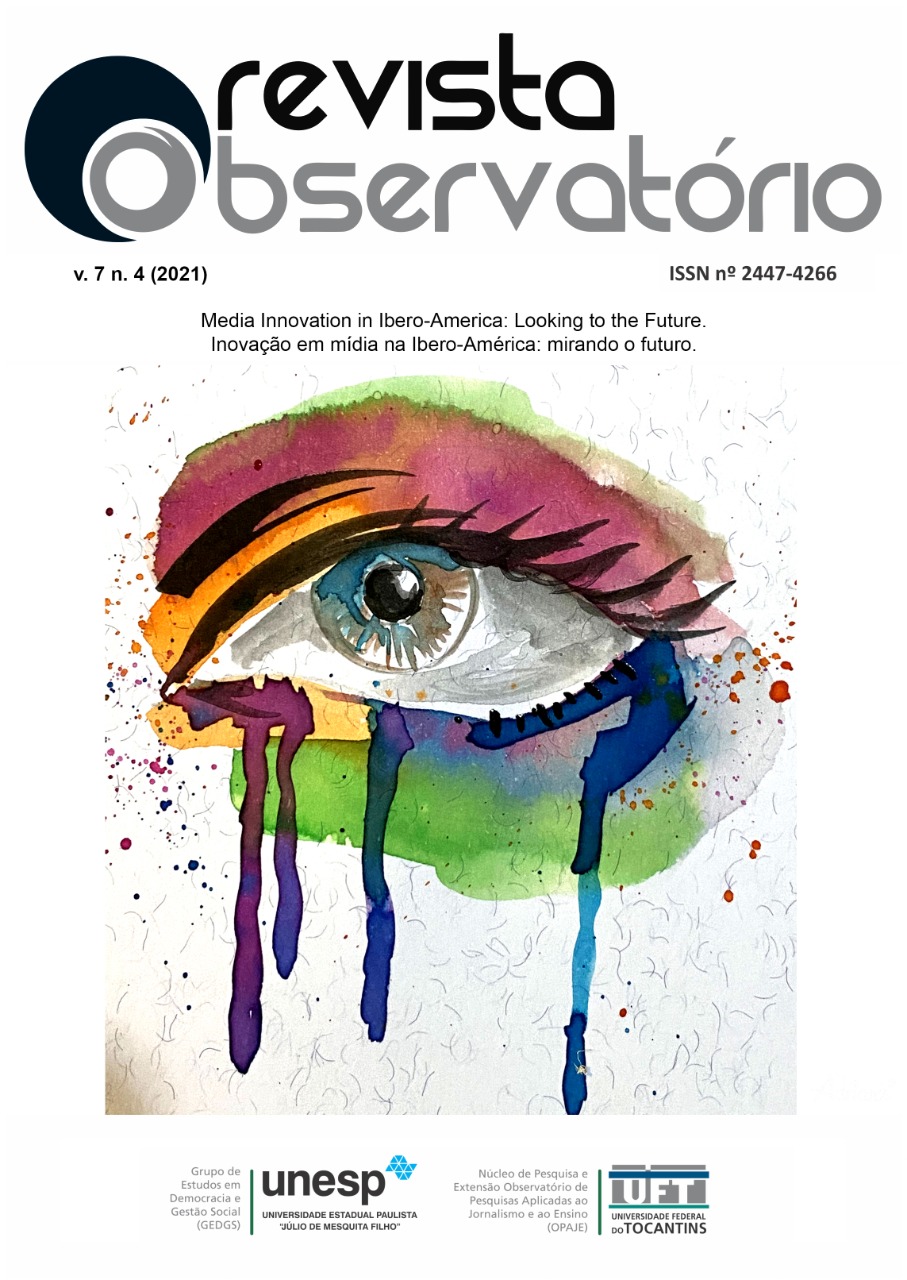MASSIFICATION AND INTERNETILIZATION: two sides of the same coin in the process of alienation by the media
DOI:
https://doi.org/10.20873/uft.2447-4266.2021v7n4a6enPalavras-chave:
Media, Alienation, ExtensionResumo
It is intended to observe how technological changes have promoted changes in society, however it seems that one thing remains the same: the use of the media as a technology of alienation. This observation will be carried out methodologically through a theoretical and exploratory research, seeking a review of concepts that refer to the uses and effects of the media. In this sense, the hypothesis is that the idea that in the sense of alienating use of means there have been no major changes. The means, by extending human perception, seem not to have produced an effect of liberating consciousness, but rather, it has expanded the process of mystification and alienation, through the massification of information, creating an internetilization, a massification through digital media.
Downloads
Referências
ADORNO, T. e HORKHEIMER, M. Indústria Cultural: O Iluminismo como mistificação das Massas. (in) LIMA, L. C. Teorias da cultura de massa. São Paulo: Paz & Terra, 2000.
ADORNO, T. e HORKHEIMER, M. Dialética do esclarecimento. Rio de Janeiro: Zahar, 2019.
BARTHES. R. Mitologias. Rio de Janeiro: Difel, 2002.
BAUMAN, Z. Vida para o consumo. Rio de Janeiro: Zahar, 2008.
COELHO NETTO, J. T. Semiótica, informação e comunicação. São Paulo: Perspectiva, 2012.
D'ANCONA, M. Fake news: a nova guerra contra os fatos em tempos de fake news. São Paulo: Faro Editorial, 2018.
DE PAULA, M. G. “Para que tudo permaneça como é, é necessário que tudo mude”: O niilismo de o leopardo de lampedusa e o niilismo cristão kierkegaardiano no século das mudanças. Pensando – Revista de filosofia. V. 7, n. 14, 2016. Disponível em: https://revistas.ufpi.br/index.php/pensando/article/view/4458.
DUGNANI, P. Pós-modernidade e comunicação: dos meios de massa aos meios digitais. Comunicação & inovação (ONLINE), v. 21, p. 129 - 146, 2020. Disponível em: http://seer.uscs.edu.br/index.php/revista_comunicacao_inovacao/article/view/6201. Acesso em: 14 dez. 2020.
DUGNANI, P. Meios de Comunicação: Extensão e Alienação. Revista Observatório, v. 5, n. 4, p. 481-501, 1 jul. 2019. Disponível em: https://sistemas.uft.edu.br/periodicos/index.php/observatorio/article/view/6590. Acesso em: 14 ago. 2020.
ECO, Umberto. Apocalípticos e integrados. São Paulo: Perspectiva, 1993.
FANJUL, S. C. Na verdade, o que [...] é exatamente um algoritmo? Disponível em: https://brasil.elpais.com/brasil/2018/03/30/tecnologia/1522424604_741609.html. Acesso em: jan. 2021.
JENKINS, H. Cultura da convergência. São Paulo: Aleph, 2015.
LEVY, P. Cibercultura. São Paulo: Editora 34, 2010.
MATTELART, A. e MATTELART M. História das teorias da comunicação. São Paulo: Loyola, 1999.
MCLUHAN, M. Os meios de comunicação como extensões do homem. Cultrix: São Paulo, 2016.
PRIOR, H. (2019). Mentira e política na era da pós-verdade: fake news, desinformação e factos alternativos. In P. Lopes & B. Reis (eds.), Comunicação Digital: media, práticas e consumos (pp. 75-97). Lisboa: NIP-C@M & UAL. Disponível em http://hdl.handle.net/11144/3976. https://doi. org/10.26619/978-989-8191-87-8.4. Acesso em: jan. 2021.
Publicado
Como Citar
Edição
Seção
Licença
[PT] Autores que publicam nesta revista concordam com os seguintes termos:
1. Autores mantém os direitos autorais e concedem à revista, sem pagamento, o direito de primeira publicação, com o trabalho simultaneamente licenciado sob a Creative Commons Attribution License (CC BY-NC 4.0), permitindo o compartilhamento do trabalho com reconhecimento da autoria do trabalho e publicação inicial nesta revista.
Leia todos os termos dos direitos autorais aqui.


